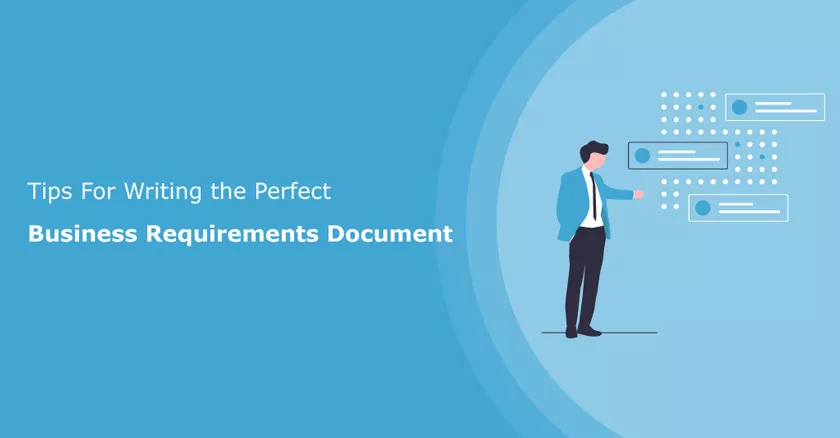A business requirements document (BRD) is an important document that is critical for the completion of a successful project. A well-written BRD outlines all the essential information that helps the team to stay on the same page.

Top tips for writing the perfect business requirements document
However, any inconsistency in BRD can prove to be catastrophic for a project, even pushing it to an extent where it becomes a complete failure.
Therefore to avoid any mishap and ensure that the project runs smoothly and on schedule, it is important to write a perfect business requirement document. So, in this article, we will discuss the top 5 tips for creating a unique business requirements document (BRD).
Top 5 tips for writing the perfect BRD
1. Identifying the requirements
No matter how impressive your writing skills are, a BRD will not be effective if you manage to leave out some of the crucial requirements. To ensure that you do not leave out any requirements, it is highly recommended to apply proper elicitation methods, as it helps eliminate errors.
There are a total of 9 elicitation methods, but your business may not require all of them, so feel free to leave out the ones not relevant to your business. The elicitation methods are as follows:
- Brainstorming
- Document analysis
- Interface analysis
- Focus groups
- Prototyping
- Requirements workshops
- Interviews
- Observation
- Surveys
Whichever method you use, make sure to ask all relevant questions even if they seem too obvious. Another tip we have from our own experience is not to make any assumptions, no matter how obvious they may be, as questions and keep a record for future reference.
Use clear language
We live in an era of globalization, and our team members can be from anywhere in the world. And because BRD documents are text-heavy, it is easy for non-native speakers (sometimes even for native speakers) to get lost and get a misrepresentation of the requirement.
This can be a costly mistake as going back and changing a single requirement can be too extensive and time-consuming. So, avoid using complex language, technical words, and jargon. Prepare the BRD in such a way that even a non-technical person can have a look and understand the requirements.
Use a template
Starting your BRD document from scratch can be tempting as you get to build and customize the document exactly the way you want. However, this makes your document susceptible to errors and, in general, is a waste of time.
So, it is highly recommended to use a template using which you can quickly get started and save precious time. You can download a free BRD template by clicking on this link.
Include visuals
A picture is worth a thousand words; if you heard about this phrase, it’s time to put it into action. Visuals make it significantly easier to understand key points in BRD and should be implemented whenever possible. You may also include low-level design and flowcharts as well as handwritten documents to speed up your development process.
Validate the documentation
Once you have completed the BRD, carefully check every aspect of it to make sure there is no mistake on the document. A good practice might be running the BRD with the client; allowing them to validate the documentation before starting the project dramatically reduces document mistakes.
Final words
Have you seen the expectation vs. reality memes on the internet? If you do not want your final project to be a failure, it is fundamentally important to spend time on the BRD as it can make or break your project. Follow our tips and get started with a template if you do not want to waste time.
